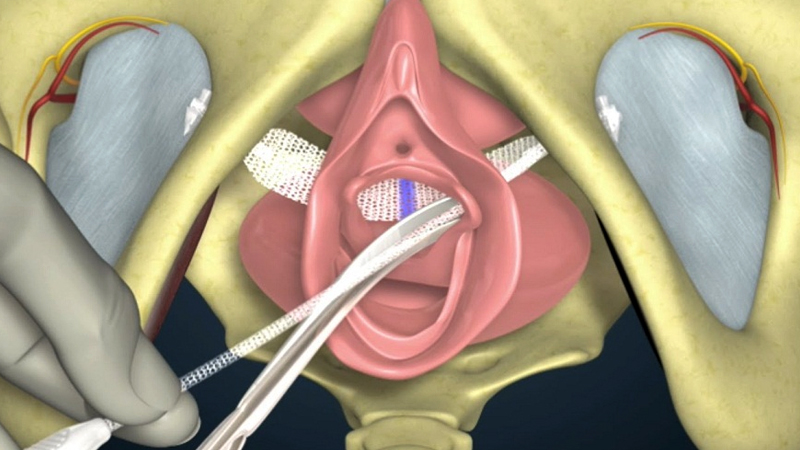
Sling Surgeries
Sling surgeries are a group of surgical procedures used to treat stress urinary incontinence (SUI), which is the involuntary leakage of urine during activities that increase abdominal pressure, such as coughing, sneezing, or exercising. These procedures involve the placement of a sling, usually made of synthetic material or the patient's own tissue, to support the urethra and prevent urine leakage.
Indications
Sling surgeries are indicated for:
- Stress Urinary Incontinence (SUI): Involuntary leakage of urine due to increased abdominal pressure.
- Failed Non-Surgical Treatments: When conservative treatments like pelvic floor exercises, medications, or pessaries have not been effective.
- Desire for a Long-Term Solution: When patients seek a more permanent solution to manage their incontinence.
Types of Sling Surgeries
-
Midurethral Sling (MUS)
- Tension-Free Vaginal Tape (TVT): The sling is placed under the mid-urethra through a small vaginal incision, with the ends exiting through small abdominal incisions.
- Transobturator Tape (TOT): Similar to TVT, but the sling exits through the obturator foramen (a pelvic bone opening) rather than the abdomen.
-
Mini-Sling
- A shorter sling placed via a single vaginal incision without the need for additional exit points.
-
Autologous Fascial Sling
- Uses a strip of the patient's own tissue, usually taken from the abdominal wall or thigh, to create the sling. This is typically placed via an abdominal incision.
Procedure
Midurethral Sling (TVT/TOT)
- Anesthesia: General, regional, or local anesthesia is administered.
- Incisions: A small incision is made in the vaginal wall under the urethra and small incisions in the abdomen or groin (depending on the type).
- Sling Placement: The sling is placed under the mid-urethra and positioned correctly.
- Closure: Incisions are closed with sutures or surgical glue.
Mini-Sling
- Anesthesia: Usually local or regional anesthesia.
- Incision: A single small incision is made in the vaginal wall.
- Sling Placement: The mini-sling is positioned under the urethra.
- Closure: The incision is closed with sutures.
Autologous Fascial Sling
- Anesthesia: General or regional anesthesia is administered.
- Incision: An abdominal incision is made to harvest the fascial strip and a vaginal incision is made for sling placement.
- Sling Placement: The fascial strip is positioned under the urethra and secured.
- Closure: Both abdominal and vaginal incisions are closed with sutures.
Recovery
- Hospital Stay: Most sling surgeries are outpatient procedures, allowing patients to go home the same day. Some cases may require an overnight stay.
- Postoperative Care: Includes pain management, prevention of infection, and monitoring for complications.
- Activity: Patients are advised to avoid heavy lifting, strenuous activities, and sexual intercourse for about 4-6 weeks.
- Follow-up: Regular follow-up appointments to ensure proper healing and function.
Benefits
- Effectiveness: High success rates in reducing or eliminating stress urinary incontinence.
- Minimally Invasive Options: Procedures like TVT, TOT, and mini-slings involve small incisions and shorter recovery times.
- Improved Quality of Life: Significant reduction in urine leakage improves daily activities and overall quality of life.
Risks and Complications
- Infection: At the surgical site or urinary tract.
- Bleeding: Some bleeding during or after the procedure.
- Urinary Retention: Difficulty emptying the bladder completely.
- Erosion: The sling material can erode into the urethra or vaginal wall.
- Pain: Chronic pain at the surgical site or during intercourse.
- Bladder Injury: Accidental injury to the bladder during surgery.
Alternatives
- Pelvic Floor Exercises: Also known as Kegel exercises, to strengthen pelvic muscles.
- Medications: To manage symptoms of urinary incontinence.
- Pessaries: Devices inserted into the vagina to support the bladder neck.
- Bulking Agents: Injections to bulk up the urethral tissue and improve closure.
Patients should discuss their specific symptoms, medical history, and the potential benefits and risks of sling surgery with their healthcare provider to determine the most appropriate treatment option.
